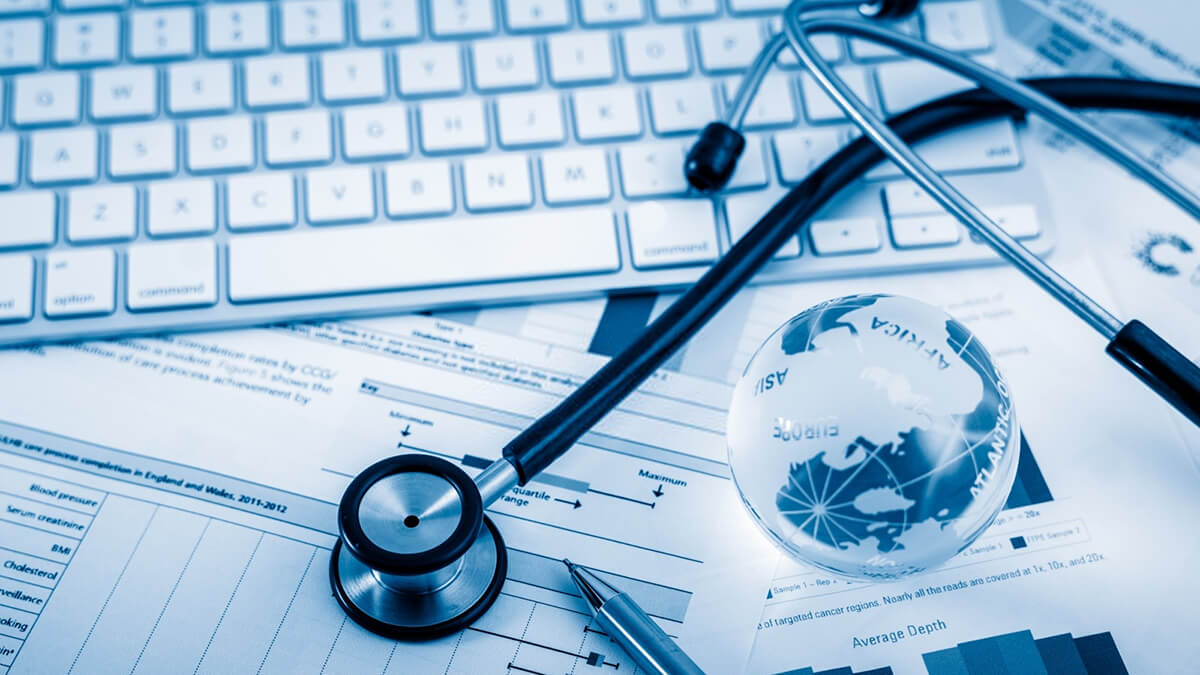A Total Guide to Medical Administration Certifications and Credentials
A Total Guide to Medical Administration Certifications and Credentials
Blog Article
Best Practices in Medical Management for Improving Performance and Lowering Expenses
In the ever-evolving landscape of health care, the search of ideal methods in medical management is extremely important for improving efficiency and suppressing costs. By incorporating innovative innovations such as electronic wellness documents and telemedicine, healthcare companies can enhance procedures and improve person care. Nonetheless, innovation alone is not a panacea; maximizing source allotment and cultivating collective interaction among treatment teams are similarly essential (medical administration). As organizations make every effort to balance top quality and cost, what approaches should be focused on to accomplish these double objectives? The answers to these concerns hold the secret to a more lasting medical care system.
Leveraging Advanced Modern Technology
The assimilation of electronic remedies right into healthcare systems has transformed the means centers run, improving processes and boosting individual care. By centralizing patient information, EHRs remove the requirement for cumbersome documentation and assist in seamless interaction among health care suppliers.
Telemedicine is one more technological improvement that has transformed client interaction. It offers comfort for both clients and medical care experts by enabling remote assessments, which can minimize the demand for in-person brows through and enhance consultation scheduling. In addition, telehealth platforms can extend healthcare accessibility to rural or underserved locations, linking gaps in treatment delivery.
Moreover, using Artificial Knowledge (AI) and device understanding is becoming significantly prevalent in predictive analytics, enabling early discovery of possible health problems and even more informed decision-making. These innovations, when incorporated effectively, can enhance analysis precision and personalize client therapy strategies, ultimately resulting in improved medical care outcomes and operational effectiveness.
Optimizing Source Appropriation
By purposefully handling resources such as personnel, equipment, and finances, medical care centers can substantially improve their operational performance, boost individual results, and decrease unnecessary expenses. The very first step in optimizing source allowance includes performing a thorough evaluation of current assets and recognizing areas where sources may be underutilized or exhausted.
Prioritizing resource appropriation based on patient demands and service needs is crucial. This includes lining up sources with high-demand areas, such as emergency situation treatment or specialized treatments, to guarantee prompt and effective person care. Carrying out flexible staffing designs can also maximize labor sources by readjusting personnel allocation in feedback to rising and fall client volumes. In addition, embracing telemedicine and various other technological options can minimize physical source constraints by supplying alternate methods for patient-provider interactions.
Funds ought to be thoroughly monitored and assigned with critical foresight to support both short-term operational requirements and lasting institutional goals. This includes investing in training programs that boost staff competencies and embracing energy-efficient methods that lower functional prices (medical administration). Inevitably, an optimized source appropriation strategy fosters a sustainable healthcare environment that is responsive, efficient, and financially prudent
Streamlining Process Processes
When healthcare facilities objective to improve operational efficiency, streamlining workflow processes becomes a critical focus. Efficient operations decrease redundancy, remove unneeded steps, and improve coordination among health care experts. This technique not just accelerates service shipment but also boosts the high quality of individual treatment.

Next, modern technology combination plays a significant function in simplifying process. Applying electronic health and wellness documents (EHRs) and electronic medical professional order entry (CPOE) systems minimizes documentation, reduces human mistake, and makes certain information comes to all relevant personnel. In addition, leveraging telemedicine systems can streamline client appointments and follow-ups, reducing the strain on physical facilities.

Ultimately, streamlined workflows lead to set you back reductions and enhanced person satisfaction, promoting an extra lasting medical care environment.
Enhancing Information Monitoring
Structure upon structured workflows, optimizing information monitoring ends up being a crucial element in advancing healthcare management. Reliable data management systems are essential for maintaining exact individual records, boosting decision-making, and making certain conformity with regulative requirements. By implementing robust data monitoring solutions, healthcare facilities can enhance the quality of patient treatment while at the same time lowering functional expenses.
One key facet of improving information administration is the integration of innovative electronic health document (EHR) systems. These systems help with the smooth exchange of client details across various departments, lowering replication of tests and decreasing errors. A properly designed EHR system supports information analytics, enabling doctor to identify patterns and make educated decisions regarding individual treatment.
Moreover, securing patient data is extremely important. Adopting detailed cybersecurity measures, including security and normal audits, guarantees the stability and discretion of sensitive info. This not just secures patients but likewise keeps the institution's credibility.
Purchasing team training is another vital factor. Informing health care specialists on information monitoring practices enhances their capability to successfully make use of technology, resulting in enhanced individual end results. To conclude, boosting information management through advanced technology and extensive training is crucial for attaining performance and price decrease in clinical management.
Fostering Collaborative Interaction
An essential part ahead of time clinical administration is promoting collective communication among healthcare professionals. Reliable interaction is vital for ensuring seamless person treatment, enhancing treatment outcomes, and minimizing mistakes. By urging open discussion and control throughout multidisciplinary teams, healthcare companies can improve their operational efficiency and lower unneeded expenses.
Central to this approach is the integration of communication modern technologies such as digital health and wellness records (EHRs) and safe and secure messaging systems, which help with the rapid exchange of critical individual information. These devices make it possible for medical care carriers to access and share data in genuine time, guaranteeing that all employee are informed and straightened in their decision-making processes. Additionally, normal click for more group meetings and interdisciplinary rounds can even more advertise a culture of cooperation and responsibility.
Educating programs concentrated on enhancing communication skills are likewise necessary. Inevitably, fostering collective communication leads to enhanced health care distribution and price financial savings.

Final Thought
Incorporating advanced technology, such as electronic health records and telemedicine, alongside optimized resource allocation and streamlined workflow processes, is vital for enhancing efficiency in clinical management. Efficient data administration and fostering collaborative interaction amongst healthcare teams are crucial for minimizing redundancies and boosting treatment high quality. By prioritizing preventive treatment and participating in high quality enhancement initiatives, healthcare companies can accomplish site web considerable cost financial savings and boosted client outcomes, therefore making certain lasting medical care shipment in a progressively complex setting.
Report this page